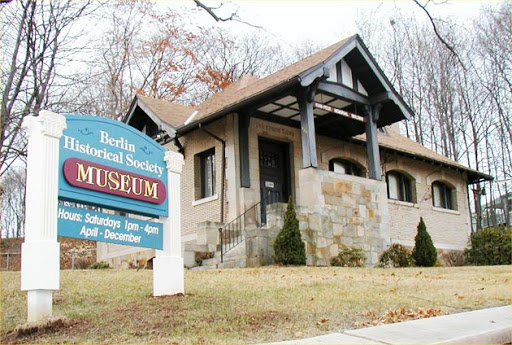|
 Image Source: http://berlincthistorical.org/ In Berlin, Teaching Germany's Jewish History By EDWARD ROTHSTEIN BERLIN - There may be worse Jewish museums in the world than the Judisches Museum Berlin, which opened in 2001. IntroductionBut it difficult to thought that any could be as uninspiring and banal, particularly given its pedigree and promise. Has any other Jewish museum been more celebrated or its new building (designed by Daniel Libeskind) so widely hailed? Is any other Jewish museum of more symbolic importance?
This is the largest such institution in Europe, a national museum devoted to exploring the history of a people this country was once intent on eradicating. Is there any museum of any kind more laden with the baggage of guilt and suffering, of restitution and tribute? So many museums now deal with recollections of trauma that Berlin’s fraught examples are illuminating. Ruin and relics are part of renovation here. When the destroyed Neue Synagoge was being restored, it was clear that the original 19th-century structure, with its ornate echoes of Alhambra, could never be reconstituted. So its extraordinary facade, rededicated in 1995, frames not a house of worship but a modest exhibition about a particular Jewish community and its once-thriving synagogue, while fragments of the original building's altar are pieced together like an unfinished puzzle. The Judisches Museum inverts the formula. Here it is the new - this building designed by Mr. Libeskind — that invokes scars and wreckage. The old is suggested by its contents, consisting largely of text, images, reproductions and interactive displays that are meant to conjure a past worthy of celebration. This museum may even be considered a German example of a genre dominant in U.S.A: the "identity" museum. Typically, the identity museum recounts how a particular ethnic group telah bertahan, chronicling its travails and triumphs, culminating in the institution's own prideful displays. Here, of course, the Holocaust interrupts the uplift. But the overarching idea was to reveal something about the people Hitler set out to obliterate by surveying the rich, complicated history of Jews in Germany. So while the narrative begins with evocations of the Holocaust, it is meant to end, if not in redemption for Germans or Jews, at least in a kind of honoring each other. In the museum's catalog foreword, the German commissioner for cultural affairs, Julian Nida-Rümelin, menunjuk out that the institution may be providing "the only contact many non-Jewish Germans have with Jews and Judaism" outside their history classes. The museum’s curator, W. Michael Blumenthal, explains, too, that the exhibition’s story "far transcends" the history of German Jewry, demonstrating "a widely shared determination" to apply its lessons "to societal problems of today and tomorrow," and promoting "tolerance toward minorities in a globalized world." The resulting strain is almost bipolar, with the building aggressively screaming about apocalypse as its exhibition affirms harmonious universalism, with neither making its case. The building, for example, proposes that the shattered, fractured world of the Holocaust is best suggested by shattered, fractured space. You enter the exhibition by descending a lobby staircase that leads into a world of skewed geometry. The floors are raked and tilted. Displays are off-kilter. And rather than feeling something profound, you almost expect moving platforms and leaping ghosts, as in an amusement park's house of horrors. Add to this a sheen of pretense. One corridor is called the Axis of Exile, because along it are the personal effects of Jews who fled Germany during the 1930s. Another is named the Axis of the Holocaust, which shows letters and photographs of murdered Jews. And lest it all look too bleak, an Axis of Continuity leads upstairs, where you learn about where all of this fits into 2,000 years of German Jewish history. Meanwhile, the items on display are so cursorily identified and their owners so obliquely described that they might as well have been anonymous points on an Axis of Victimhood. The space trivializes history rather than revealing it. To see what else is possible, go in Berlin to the outdoor Memorial to the Murdered Jews of Europe: it, too, uses abstract space to symbolize tragedy, but doesn't prod or preen. Its thousands of pillars seem to emerge gradually from the city's street. But their array creates passages that lead you from daylight into dense alleys of looming stone, as if you are gradually submerged into a maze, obliterating the human. The pillars can resemble the tilted gravestones of Prague’s ancient Jewish Cemetery, only here they are anonymous and ominous.
Other Posts:
Frank Llyoyd Wright
|


